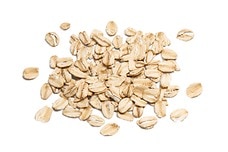Celiac Disease
One in every 133 Americans has celiac disease, meaning it affects .75% of the population (Beyond Celiac, 2015). An astonishing 83% of people with this disease may be misdiagnosed or undiagnosed entirely. Because celiac disease affects your ability to metabolize gluten, people with the condition must follow a strict gluten-free diet. Understanding more about celiac disease can help you maintain your health while living with this condition.
What Is Celiac Disease?
Celiac disease is a genetic autoimmune disease, meaning that the body’s own immune system does not respond properly to innocuous stimuli. The disease is hereditary, meaning that if you have a first-degree relative with celiac disease (e.g., a parent, child, or sibling), you have a 10% chance of developing the disease yourself (Celiac Disease Foundation, 2014).
Celiac disease can develop at any age with some being affected in childhood and others living to adulthood before being diagnosed with the disease. Celiac disease is associated with certain gene variants. Although genetic testing can confirm the diagnosis, genetic tests alone are not conclusive to make a diagnosis (National Institute of Diabetes and Digestive and Kidney Diseases, 2015).
People with celiac disease are unable to digest gluten, a protein found in wheat, rye, and barley products. Even very small amounts of gluten can trigger significant intestinal damage, meaning that people with celiac disease must entirely avoid foods that contain gluten. Symptoms of celiac disease include (Celiac Disease Foundation, 2014):
- Abdominal bloating
- Constipation
- Chronic diarrhea
- Stomach pain
- Gas
- Nausea or vomiting
- Changes in stool quality (e.g. foul smell, pale color, fatty texture)
- Anemia
- Joint or bone pain
- Canker sores that develop inside the mouth
- Depression
- Anxiety
- Chronic fatigue
- Missed menstrual periods
- Headaches
- Weak or brittle bones
- Ulcers
- Blockages in the intestines
Is Celiac Disease the Same as Gluten Sensitivity?
Celiac disease is a chronic autoimmune condition in which the presence of gluten in the body triggers an abnormal immune response. This is different from gluten sensitivity, a condition that has gained a lot of media attention but remains poorly understood. Non-celiac gluten sensitivity appears to trigger similar symptoms to celiac disease. However, in those with gluten sensitivity, the protein does not trigger an autoimmune response as it does in those afflicted by celiac disease (University of California Los Angeles, n.d.). Thus, people with gluten sensitivity do not have the same intestinal damage as those with celiac disease.
Celiac disease also differs from wheat allergies, which also preclude individuals from eating wheat products. Food allergies cause a reaction triggered by a specific type of allergic antibodies. This is a different type of immune response than the one seen in people with celiac disease.
Physiological Effects of Celiac Disease
The intestines are a long, tube-shaped organ that fill the entire lower abdomen. The small intestine is in charge of absorbing nutrients from the food you eat. This is accomplished by villi, small fingerlike projections from the innermost lining of the small intestine. After food is absorbed by the villi, nutrients pass through the intestinal walls to be transported to cells that need them.
In people with celiac disease, gluten triggers an inflammatory response that damages the villi. This prevents villi from absorbing nutrients properly and contributes to many of the gastrointestinal symptoms of celiac disease.
Longer Term Health Problems Associated with Celiac Disease
Having an autoimmune disorder increases your risk of other immune system problems. This means that people with celiac disease have a higher risk of developing multiple sclerosis, type 1 diabetes, autoimmune thyroid disease, autoimmune liver disease, or rheumatoid arthritis (Celiac Disease Foundation, 2014).
Typically, the autoimmune reaction in celiac disease is restricted to the gastrointestinal tract where gluten is found. However, the autoimmune response may also spread to other parts of the body, including the nervous system, skin, bones, joints, and spleen. Thus, there can be other serious long-term health problems that are associated with celiac disease. These include (National Institute of Diabetes and Digestive and Kidney Diseases, 2015):
- Dermatitis herpetiformis (an itchy rash with a blistered appearance)
- Anemia
- Osteoporosis
- Miscarriage or infertility
- Epilepsy or seizures
- Migraines
- Short stature
- Intestinal cancer
- Ulcers
- Blocked intestines
- Severe abdominal pain or bloating
- Malnutrition
- Liver disease
- Lymphoma
In children with celiac disease, the condition is associated with failure to thrive, poor growth and development, weight loss, delayed puberty, and problems with dental enamel. Prompt and accurate diagnosis is important to prevent complications of the disease.
Foods to Avoid in a Gluten-Free Diet
There is no cure for celiac disease. The only available treatment is completely avoiding any gluten in your diet. This means completely foregoing any products that contain wheat, barley, rye, or triticale (a hybrid between wheat and rye). White flour, wheat flour, brewer’s yeast, malt, modified food starch, dextrin, oats, and semolina all contain gluten. Other processed foods frequently contain gluten products that enhance flavor, improve nutrition, or stabilize the foods. Common foods that contain gluten include (National Institute of Diabetes and Digestive and Kidney Diseases, 2015):
- Chewing gum
- Jarred sauces
- Bouillon cubes
- Imitation fish
- Gravy
- French fries
- Tortilla chips
- Brown rice syrup
- Rice mixes
- Sausages
- Candy
- Canned soups
- Soy sauce
- Hot dogs
- Deli meat
- Beer
- Malted milk
Although eating gluten-free rules out a lot of grain products, there are still many grains that do not contain gluten. Following a celiac-friendly diet gives you the opportunity to experiment with less common grains and other foods that are healthy for you. People with celiac disease may enjoy amaranth, quinoa, rice, legumes, lentils, millet, cassava, buckwheat, flax, corn, yucca, soy, potatoes, and gluten-free oats. Nuts and seeds are also gluten free and make a great source of protein.
It is essential to carefully check labels and ask questions if you are unsure whether a product contains gluten. Even certain medications or non-food products can contain gluten that will trigger an autoimmune reaction. People with celiac disease must be cautious when taking prescription medications, over-the-counter medications, vitamins, herbal or nutritional supplements, lip balm, skin products, cosmetics, and toothpaste.
Other Dietary Considerations for People with Celiac Disease
Unfortunately, people with celiac disease have a significantly higher risk of nutritional deficiencies than people without the disease. Nutritional deficiencies result from a twofold problem: people with celiac disease must follow a restricted diet, and the disease itself may affect absorption of important vitamins and minerals. People with celiac are at risk for deficiency in iron, folate, vitamin B12, calcium, and vitamin D (Cupples Cooper, 2012).
Eating whole foods that are naturally gluten free is the best way to prevent nutritional deficiencies (Cupples Cooper, 2012). For example, beef, poultry, and seafood are naturally high in heme iron that is more easily absorbed by the small intestine. Eating leafy green vegetables, beans, lentils, and enriched rice provides folate, while calcium and vitamin D may be obtained from nonfat dairy products. For people unable to digest dairy products, leafy green vegetables, quinoa, brown rice, fortified orange juice, soy products, beans, enriched eggs, avocado, and fatty fishes provide calcium and vitamin D. Finally, eating gluten free grains is an excellent way to provide fiber, which people with celiac disease often lack. Look for fortified versions of gluten free grains, which often contain beneficial vitamins and minerals that people with celiac disease particularly need.
Gluten-Free Recipes
The two recipes below are a small sample of our large depository of gluten-free recipes. Discover the full list here.

Banana Bread Recipe {gluten-free}
This recipe offers a delectable loaf of bread that is completely gluten-free. Not only does this loaf feature a soft and airy consistency, but its inclusion of nuts creates a satisfying crunch and a rich flavor that complements the sweet savor of the banana.
Ingredients: Overripe bananas, eggs, coconut oil, applesauce, almond milk, honey, vanilla extract, brown rice flour, coconut flour, walnuts, gluten-free rolled oats, baking soda, baking powder.
Total Time: 1 hour
| Yield: 12 servings

Quinoa Tabbouleh Salad Recipe {gluten-free}
This superb salad includes the gluten-free grain, quinoa, to provide plenty of starches to keep your energy up throughout the day. The recipe also includes 88% of the Daily Value (DV) for iron in each serving to help you meet your nutritional needs.
Ingredients: Quinoa, cherry tomatoes, red onion, cucumber, extra virgin olive oil, balsamic vinegar, fresh parsley, fresh mint, black pepper, salt.
Total Time: 40 minutes
| Yield: 4 servings
Gluten-free Foods
These grains make delectable additions to your diet. For a list of gluten-free snacks to go along with these gluten-free ingredients, check out our gluten-free snacks page here.
Healthy Eating
- Healthy Snacks
- Healthy Highlights
- 5 Uses for Cacao Powder
- 5 Ways to Eat Farro
- 6 Best Gluten-Free Foods
- Alcohol and the Body
- Almond Flour Recipes
- Anti-Aging Superfoods
- Beat the Afternoon Slump
- Benefits of a Plant-Based Diet
- Benefits of Baobab
- Benefits of Cashews
- Benefits of Coconut Oil for Hair
- Benefits of Coconuts
- Benefits of Dates
- Benefits of Fenugreek
- Benefits of Garcinia Cambogia
- Benefits of Goji Berries
- Benefits of Kale Chips
- Benefits of Monk Fruit Sweetener
- Benefits of Peanuts
- Benefits of Pecans
- Benefits of Pistachios
- Benefits of Pumpkin Seeds
- Benefits of Spelt Flour
- Benefits of Steel Cut Oats
- Benefits of Sunflower Seeds
- Benefits of Tiger Nuts
- Benefits of Turmeric
- Benefits of Walnuts
- Benefits of Wheatgrass
- Best Food Fads
- Cacao vs Cocoa
- Caffeine-Free Energy Foods
- Chocolate That's Good for You
- Diet vs. Exercise
- Fat Burning Foods
- Food Myths Debunked
- Foods for Bone Density
- Foods for Colon Health
- Foods for Healthy Hair
- Foods for Healthy Skin
- Foods to Help Sleep
- Foods to Reduce Stress
- Green Tea Benefits
- Healthy Baking Flours
- Heart Healthy Habits
- High Protein Health Risks
- How to Boost Your Metabolism
- How to Lose Weight While Aging
- How to Throw a Vegan BBQ
- Kaniwa vs Quinoa
- Little Health Foods
- Low-Carb: Fad or Friend?
- Making Healthier Desserts
- Mediterranean Diet Meal Plan
- Natural Beauty Products
- Nuts for Weight Loss
- Preparing Vegan Meals
- Preventing Muscle Degeneration
- Rare Superfoods
- Reduce Sugar Intake
- Save Time By Going Vegan
- Smarter Snack Swaps
- Smoothie Ingredients
- Soy Protein vs Whey Protein
- Starting a Plant-Based Diet
- Steel Cut vs Rolled Oats
- Sugar Substitutes
- Vegan Proteins
- Vegan Substitutions for Fall Recipes
- Why Go Vegan
- Healthy Meals
- Healthy Recipes
- Sports Nutrition
- Vitamins, Minerals & Nutrients



